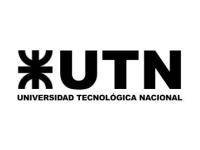















|
Ionospheric monitoring at INGV has a long history, which began with the installation of one of the first ionospheric observatories in the world in 1947. In recent time, the network has strongly increased its capability in terms of global distribution of the monitoring stations as well as concerning the Information and Communication Technologies (ICT) infrastructure, which allow the near-real time acquisition, the historical data preservation and the online data dissemination. The network is currently composed of several GNSS receivers for TEC and scintillation monitoring aimed at studying and monitoring the ionospheric irregularities as well as ionosondes, performing ionospheric vertical radio soundings. |
|
NETWORK MAP |
|
|
|
STATION LIST |
| HF SYSTEM - IONOSONDES |
| GNSS SCINTILLATION |
|
NETWORK INSTRUMENTS |
|
ADVANCED IONOSPHERIC SOUNDER (AIS)
AIS-INGV (Advanced Ionospheric Sounder) is an HF band radar designed and built at the Istituto Nazionale di Geofisica e Vulcanologia to study and monitor ionospheric dynamics through vertical ionospheric probing. AIS-INGV responds to the need to have a simple and efficient tool to investigate the Earth's ionosphere. It was designed using the most advanced radar techniques, with the result of reducing RF power, weight and dimensions while maintaining a highly reliable measurement capability even in noisy environment. The instrument is completed by the Autoscala software which analyzes the ionogram deriving the main ionospheric characteristics along with the density profile and TEC. The instrument built in various sample is installed in the following ionospheric observatories: -Rome and Gibilmanna (Italy) -Mario Zucchelli station (Antarctica) -San Miguel de Tucuman (Argentina) -Bahia Blanca (Argentina) -Juan Carlos I, Spanish base at Livingstone Island (Antarctica) |
DIGISONDE PORTABLE SOUNDER (DPS)
The DPS (Digisonde TM Portable Sounder) produce by of Massachusetts Lowell’s Center for Atmospheric Research (UMLCAR) is an ionosonde for probing the terrestrial ionosphere through the vertical and oblique sounding techniques. It exploits the modern radar techniques, such as pulse phase coding, digital pulse compression and Doppler integration, to obtain a small, compact low power system to monitor and study the ionospheric dynamics. Based on a multiple antennas and multiple receivers arrangements it is able to perform interferometric analysis of the received signal to support the basic vertical sounding with ordinary and extraordinary rays recognition, Doppler measurements and sky map facilities. The system is completed by Artist software able to scale ionograms automatically providing ionospheric parameters, density profile and TEC measurements. |
|
|
|
SEPTENTRIO PolaRxS / PolaRx5S (SEP)
|
The PolaRxS and the newest PolaRx5S are multi-frequency multi-constellation receiver able to track GPS L1CA, L1P, L2C, L2P, L5; GLONASS L1CA, L2CA; Galileo E1, E5a, E5b, E5AltBoc; COMPASS B1, B2; SBAS L1. They are equipped with a low-noise OCXO oscillator and stores, for every satellite in view and for every available frequency, the raw phase (in cycles) and post-correlation I and Q samples acquired at a sampling rate of 50/100 Hz. They are able to provide, with a 1-minute resolution, the amplitude (S4) and phase (sF) scintillation indices, together with the Total Electron Content (TEC) and its rate of change (ROT). |
|
|
|
NOVATEL GPSTATION 6 (NMC)
|
NOVATEL GSV4004A / GSV4004B (NGP)
|